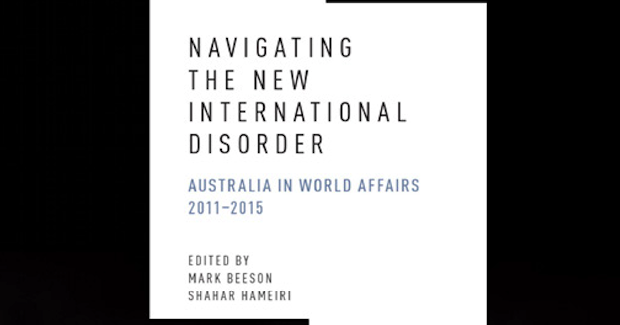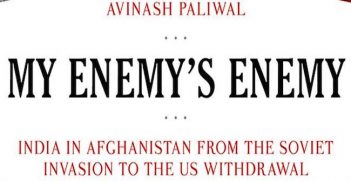Reading Room: Navigating the New International Disorder

Since 1950 the Australian Institute of International Affairs has been publishing what its first editors, Gordon Greenwood and Norman Harper, described as “a series of volumes …in which at regular intervals Australian scholars would attempt to measure the problems of the Australian position, present the actual course of policy, and appraise the record”.
The latest book in this invaluable national resource is Navigating the New International Disorder: Australia in World Affairs 2011 to 2015. Two new editors, Mark Beeson and Shahar Hameri, have taken on the task.
In contrast to earlier volumes, the new book is arranged thematically in five broad sections covering Australia and world order; security; prosperity; global issues; and managing Australia’s foreign policy. The editors explain their decision by noting that the “most important issues today … cannot be simply or adequately captured through an emphasis on the relations between two or more governments”. In addition, the period saw the international disorder of the title reflected in domestic politics as four Australian prime ministers brought very different approaches to foreign policy.
Individual chapters deal in more detail with subjects ranging from international order-building to gender and foreign policy. Important contributions come from Nick Bisley on the contested regional order, Hugh White on the ‘China choice’, Melissa Conley Tyler, Shirley V. Scott and Duc Dao on the UN, G20 and international law, and Michael Wesley on the foreign policy process.
Sara Davies covers the international question that most preoccupied Australian governments over these five years, refugees and asylum seekers. Andrew Walter, Elizabeth Thurbon and Jeffrey Wilson deal effectively with the principal international economic concerns of the period.
While the decision to take a thematic approach is understandable, there are also costs. I missed, for example, a more extensive discussion of Australia’s bilateral relationships with Indonesia and Japan, or of the difficult problems of the South Pacific.
Compared with earlier volumes in the series, this one also shifts the emphasis from the history of Australian foreign policy to critical analysis. This has led at times to a more academic style, which can come at a cost to clarity for the general reader.
For most of the writers, Australia’s foreign policy story was a generally disappointing one. Hugh White, for example, notes sombrely that over these five years, “strategic rivalry among Asia’s major powers escalated sharply, Australia’s strategic risks grew accordingly, opportunities were missed and Australia’s choices narrowed”.
Lorraine Elliot, in her chapter on the environment, and Ramesh Thakur on the Indian nuclear deal, come closest to sympathy for the policy-makers’ dilemmas in a world in which, as Thakur says, “…bilateral interests have to be balanced against multilateral interests, and material interests have to be weighed against the norms and values of a rules-based order”.
Looking out on the world in the week of the book’s publication, after Brexit and the election of Donald Trump, the natural temptation is to ask, ‘And you thought that was international disorder?’
But as Australian policy makers grapple with a new sort of global environment, deglobalising and fragmented, it is all the more important that the lessons of the past are learned. Navigating the New International Disorder is an important place to begin this task.
Mark Beeson and Shahar Hameri (eds.), Navigating the New International Disorder: Australia in World Affairs 2011 to 2015, Oxford University Press 2016.
Allan Gyngell AO FAIIA is an adjunct professor at the Crawford School of Public Policy at the Australian National University and director of the Crawford Australian Leadership Forum.




